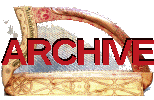
|
Sources for Gaelic harp music
Wemyss manuscript
National Library of Scotland Dep.314, No.23
Written in 1643-4, by Lady Margaret Wemyss (1630-1648).
NB this book is not NLS ms.2085 as stated here before, and in 'Tree of Strings' - that shelfmark refers to vol. 3 of the Macfarlane ms.
Early Gaelic harp tunes in this source
f24v Port Robart
Other versions: Straloch: Port Preist; Dow: Fuadh na mfilairan - The Fidler's Contemt By Rory Dall
Recommended recordings: Ann Heymann (early Gaelic harp), Cruit go nÓr, track 7
Transcriptions: Keith Sanger & Alison Kinnaird, Tree of Stringsp.176 (facsimile & staff notation)
p43r Irish Port
Other versions: none known
Recommended recordings: none known
Transcriptions:

f45v-46r Da Miche Manum (more info...)
Other versions: This is what I am calling the 17th century set of Da Mihi Manum. Baroque variants of this version appear in Balcarres,
MacFarlane, and Dow. The somewhat different standard 18th century version of Da Mihi Manum appears in Neal,
Oswald,
Thumoth, &
Bunting as well as many other 18th century Irish and Scottish mss and printed books.
Recommended recordings: Simon Chadwick (early Gaelic harp), Clàrsach na Bànrighe, track 11
Transcriptions: Ronn McFarlane, Highland King p.28 (tab) p.30 (staff)
What else is in this manscript?
This book is a ‘commonplace book’ of music and poetry compiled by Margaret Wemyss, a 13-year old aristocratic lady in Fife, Scotland. The book has many blank pages which were presumably intended to be completed gradually through her life - she died at the age of 17 or 18.
Inside the front cover she has written Be me margarat / Wymes uith / my hand / 1644. There are 5 main sections in the book.
The first section (f1r-11r) is part-songs by Morley and Campion, with a title page: A Booke / Containing some pleasant aires / of Two, Three or Fowre voices / Collected out of diverse authors / Begunne june 5 1643 / Mris Margarit Weemys.
f11v has a second title page, This boke containss Som Lesons / for the Lutt and som fine werces / And Lines. The second section (f12r-16v) is poetry. The third section (f17r-27r) is lute tablature, containing cntinental dances (sarabandes and corantes etc) and Scots airs such as 'The day daus in the morning' and 'My Lady Binnes Lilt'; also in this section is the Gaelic harp tune 'Port Robart'.
After 12 (unnumbered) blank openings, the fourth section (f28r-50r) is more lute tablature, written with a stronger hand with fewer errors. This section contains a similar selection of music, including the other Gaelic harp tunes indicated above. On f42r she writes all the lesons behind this are learned / ut of my Sisteres book
Then follows the bulk of the book, completely blank.
Written upside down from the back of the book is the fifth section (unnumbered) which consists of more poetry.
How to read the manuscript
Click here for some information on how to approach the music in the manuscript.
Simon Chadwick